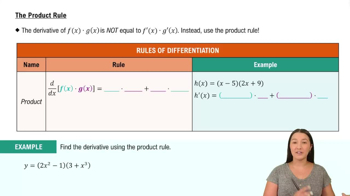49–55. Derivatives of tower functions (or g^h) Find the derivative of each function and evaluate the derivative at the given value of a.
f (x) = (sin x)^In x; a = π/2
 Verified step by step guidance
Verified step by step guidance Verified video answer for a similar problem:
Verified video answer for a similar problem:



 6:30m
6:30mMaster Logarithmic Differentiation with a bite sized video explanation from Patrick
Start learning